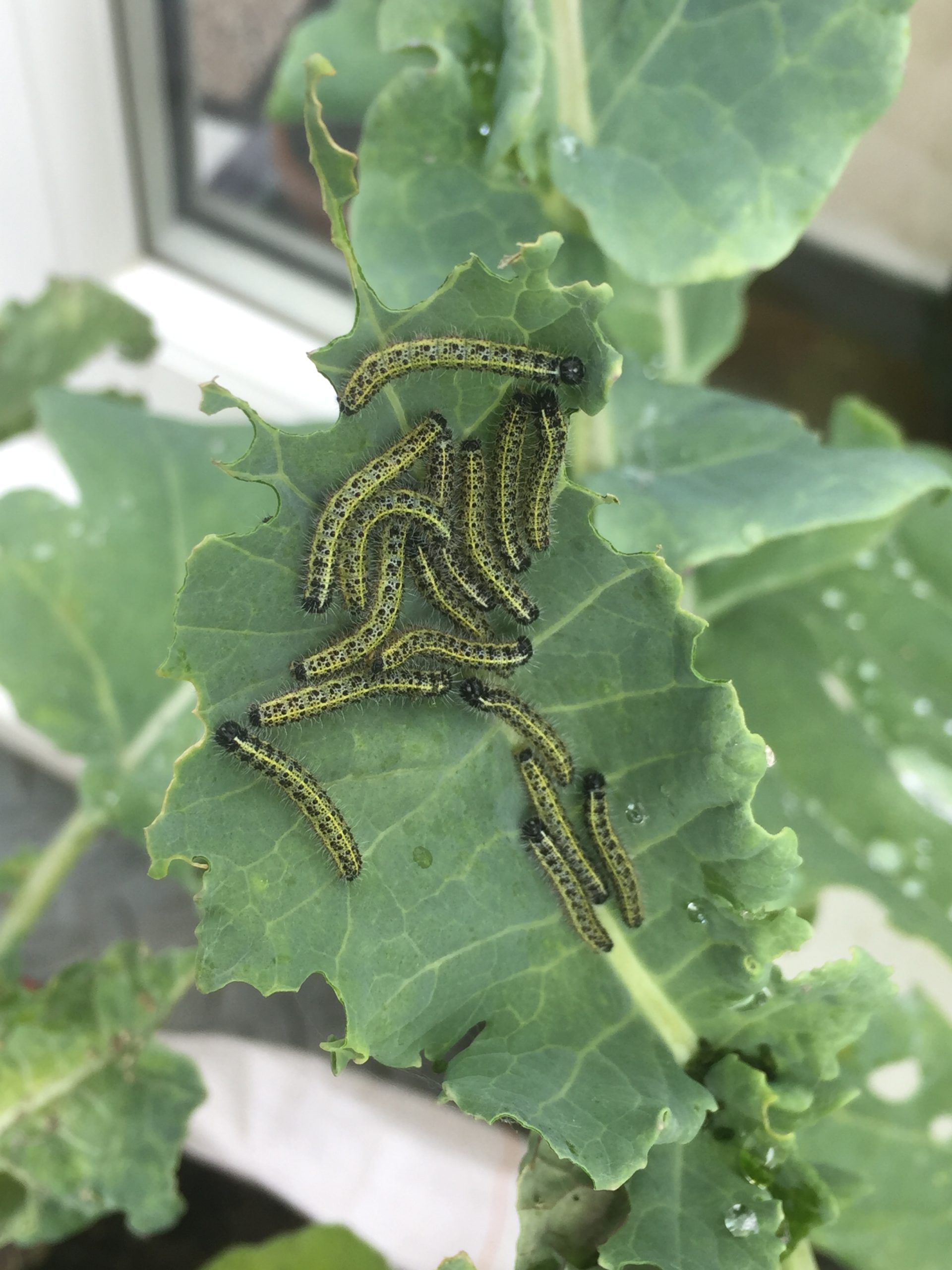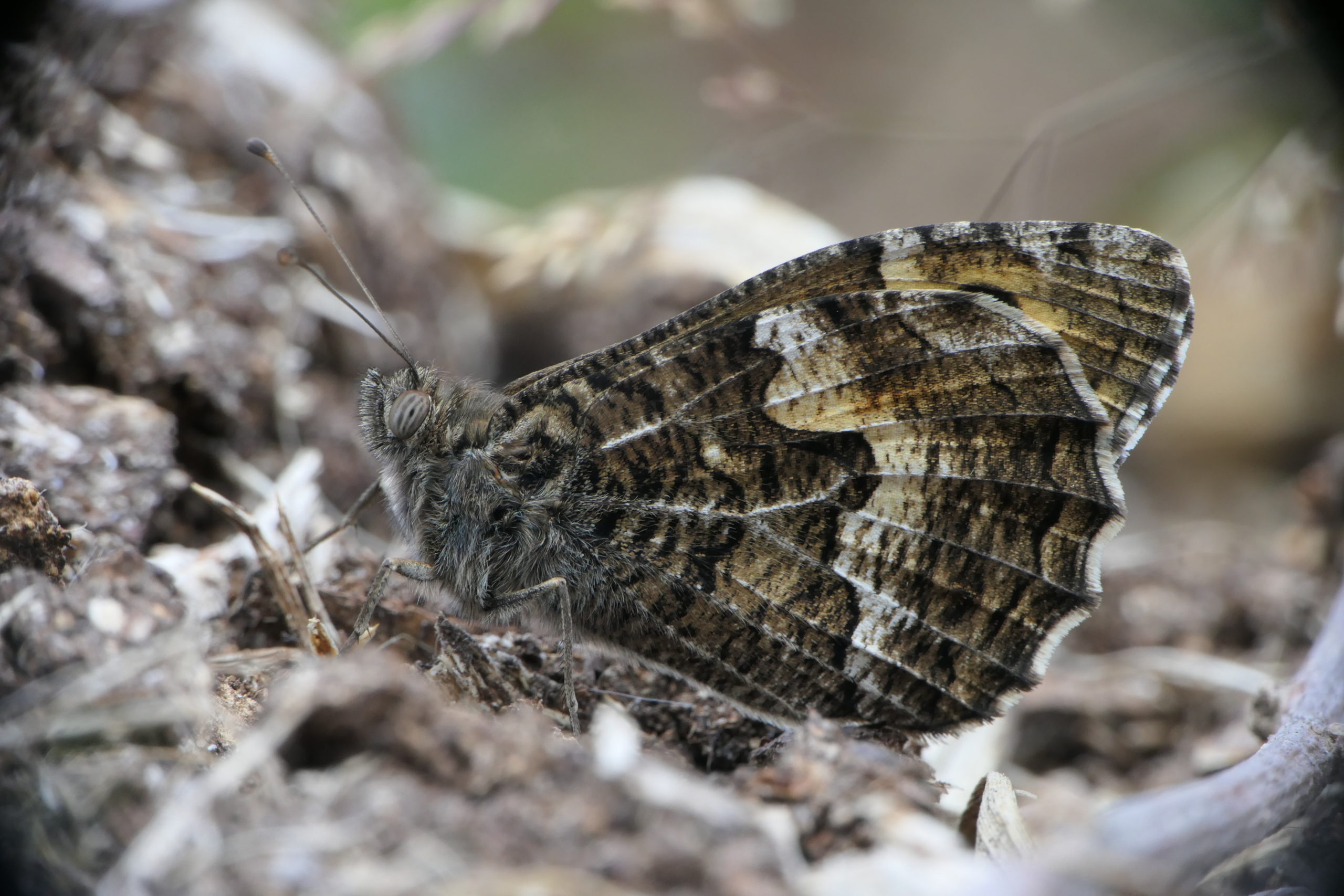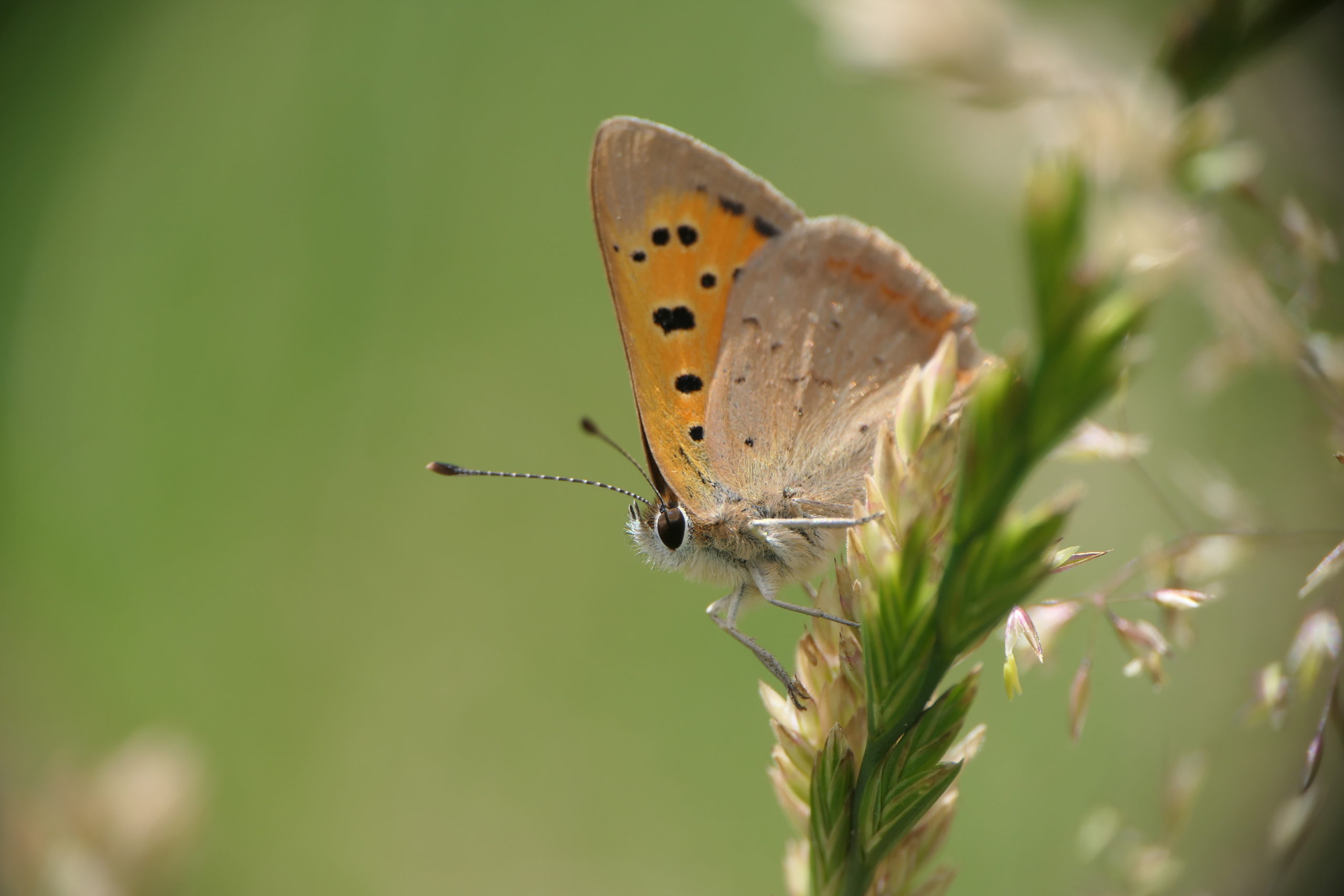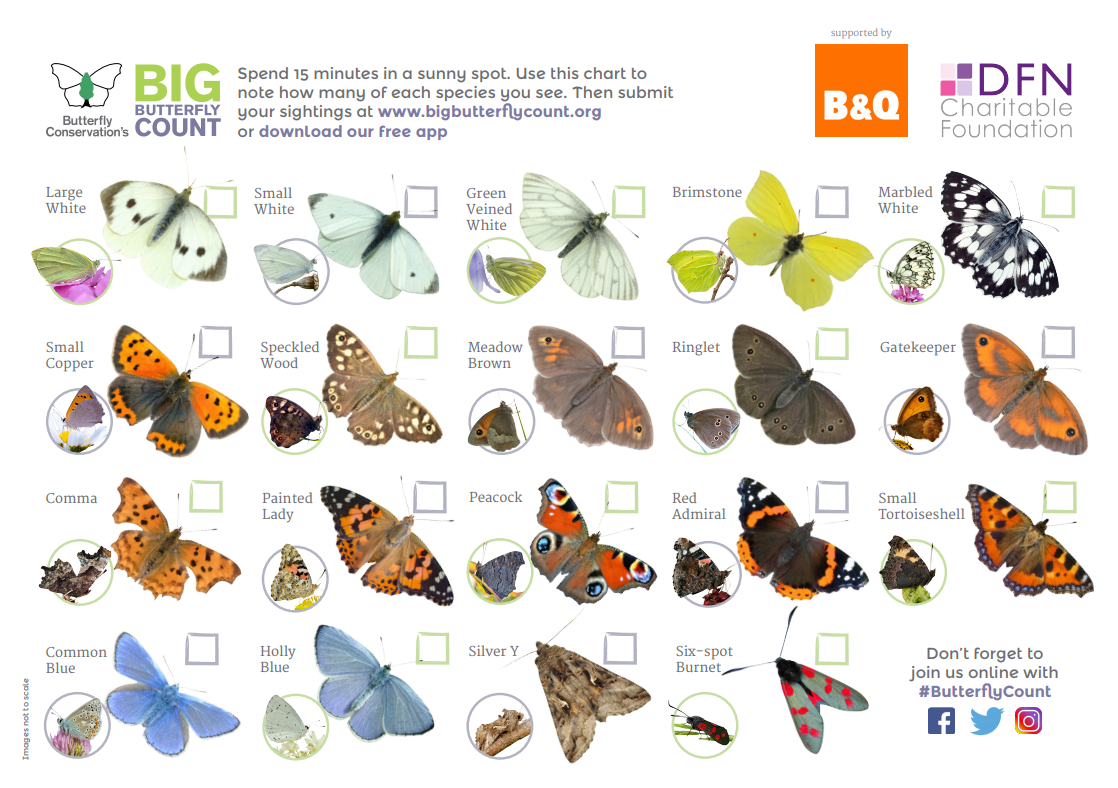Get Counting! Big Butterfly Count 2020
I don’t think there is any doubt about it, butterflies are awesome!
Their life-cycles are fascinating. The transformation from egg to caterpillar to chrysalis to adult butterfly is a mind-blowing feat. Some butterflies over-winter as an egg, a caterpillar, a chrysalis or as an adult. Some have multiple broods in a single season, some only one. Some are tied to a very specific habitat, others are generalists. Some rely on intricate relationships with ants to provide protection – this is the case with some of the blues, including our very own silver-studded blue. Some migrate here from overseas – the intrepid painted lady and clouded yellow being the two most obvious examples.

Butterflies are amazing – These large white caterpillars are doing me a favour by eating the broccoli so I don’t have to!
There are also only about sixty UK species of butterfly, so if you want to take on a species ID challenge that feels relatively achievable, this might be the one for you. You could become a butterfly expert in no time!
When you compare it to moths (2400+ species), hoverflies (280+ species) and bees (260+ species), for example, where ID often requires working through a lengthy key, access to a microscope and possessing a memory capable of remembering scientific names, becoming familiar with butterfly ID isn’t such a scary prospect. Trust me, even I can just about cope!
Add into the mix that adult butterflies are beautiful and, unlike other insects (bees and most beetles immediately spring to mind), are often fairly easy to photograph, so an interest in them often leads to an array of colourful pictures to impress your friends with on social media.

Grayling
Why is it important to count butterflies?
Butterflies are a really good indicator of how healthy our environment is. They respond more quickly to changes in the condition of habitats or climate than other species, so can act as an early warning that things are getting better or worse.
Any sightings you submit will be combined with data from across the UK to build up a nationwide picture of not just how our individual butterfly species are faring, but also provide an indication as to the changing health of our wider environment. Every sighting is important and every time you submit the details of what you see (or don’t see), it provides an extra piece to a really significant jigsaw.

Small copper
And we can all contribute to this!
In order to build up a comprehensive picture of the state of the UK’s butterflies, Butterfly Conservation – the British charity that is devoted to saving butterflies, moths and their habitats throughout the UK – runs an annual survey to assess the health of the environment by asking everyone to spend fifteen minutes counting the butterflies in their garden, local park or nearby heathland. There is more information on the Butterfly Conservation website and also a free downloadable app.
More than 113,000 people joined-in last year, submitting over 116,000 butterfly counts – Which is an amazing effort by citizen scientists across the UK.

You can download a handy ID guide from the Butterfly Conservation website
How to take part?
All you need to do is spend fifteen minutes, between Friday 17th July to Sunday 9th August 2020, counting the butterflies you see and then submit your results. You can either spend the time in one place or going on a walk. For the former, you record the greatest number of each species you see at any one time (this helps to avoid counting the same one twice) and, for the latter, you just tally up everything you see as you go. You can count in your garden, at your local park or a greenspace on your doorstep. You can even count the butterflies on a heathland visit, keeping a special eye out for our local gems – silver-studded blue and grayling!
Here’s a video of TV’s Nick Baker explaining how it all works…
Now it’s your turn… Pick a sunny day, get outside and get counting. And let us know what you see!
Michael
Education & Engagement Officer
More about the silver-studded blue butterfly
